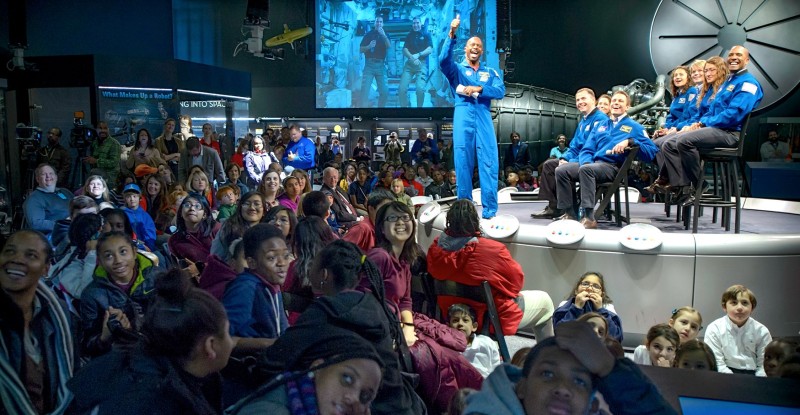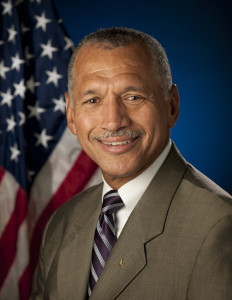 When NASA Administrator Charles Bolden speaks about the aerospace industry, he can’t disguise his excitement. Bolden had an enthralled, captive audience at last week’s Aero Club luncheon in Washington DC, where he listed some of the space agency’s recent achievements, including the launch of astronaut Scott Kelly for a one-year stay on the space station. But he also highlighted NASA’s interest in improving the hiring and retaining of more women and minorities.
When NASA Administrator Charles Bolden speaks about the aerospace industry, he can’t disguise his excitement. Bolden had an enthralled, captive audience at last week’s Aero Club luncheon in Washington DC, where he listed some of the space agency’s recent achievements, including the launch of astronaut Scott Kelly for a one-year stay on the space station. But he also highlighted NASA’s interest in improving the hiring and retaining of more women and minorities.
“We are not as successful at getting women and minorities into the work force. And it’s not intentional,” says Bolden.
The agency has difficulty keeping the women it does hire and is trying to understand how to change that. “We don’t do a good job of retaining them. That is the biggest challenge to us.”
Amy Laboda, one of the founding board members (emeritus) of Women in Aviation recently echoed a similar sentiment about the challenges women face in pursuing careers in aviation, noting that the cost of education – coupled with “less pay and benefits at the end of it” – is among the factors coloring whether they stay the course. Juggling family commitments is also a factor.
NASA’s Bolden is pleased, however, that half of the eight astronaut candidates recently selected from some 6300 applicants are women. “That’s the first time that happened,” he notes.
As a young boy growing up in Columbia, South Carolina, Bolden never dreamed he would be a pilot much less an astronaut. But his 34-year career with the Marine Corps propelled him into the space program where he became an astronaut making four trips aboard the space shuttle between 1986 and 1994.
Since becoming NASA administrator in 2009, Bolden led the agency in developing the Space Launch System (SLS) rocket and Orion spacecraft that will carry astronauts deep into space to destinations including Mars or an asteroid. He also established a new Space Technology Mission Directorate to develop technologies to support missions for the future.
He hopes to inspire a new generation of scientists, engineers and astronauts by encouraging young people to become engaged in STEM (science, technology, engineering and math) education programs. “Pick a college, any college that will allow you to focus on hard science and math. Work very hard, study very hard. We need you and we need you badly,” he urged a group of students who attended the Aero Club luncheon, and have expressed an interest in aviation careers.
NASA is pursuing a variety of other initiatives to get the word out. In March, during Women’s History Month, the agency rolled out a series of video interviews with some of its women employees.
Materials research engineer Dr. Valerie Wiesner, who is responsible for evaluating high-temperature interactions between Calcium-Magnesium Aluminosilicate and Environmental Barrier Coating materials for aircraft turbine engine development, offered this advice: “I think it’s important to promote STEM education among girls to let them know that they have the same opportunities as anyone else to be successful in STEM careers. My biggest advice to young people would be ‘never give up’. You’re going to have days where it’s a little hard whether in math in English, or what not, but the point is, never give up and once you find what motivates you, follow that as far as you can.” See her full video interview below.











